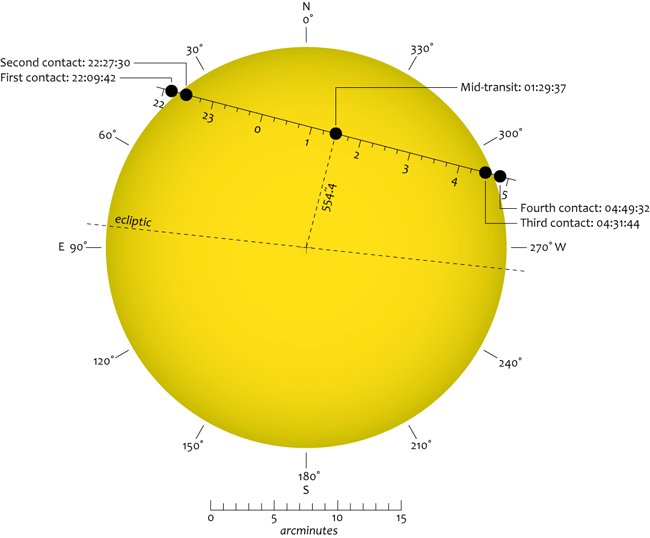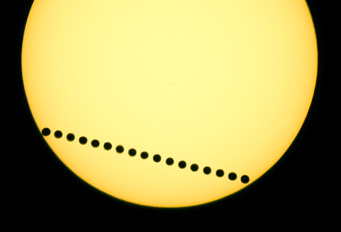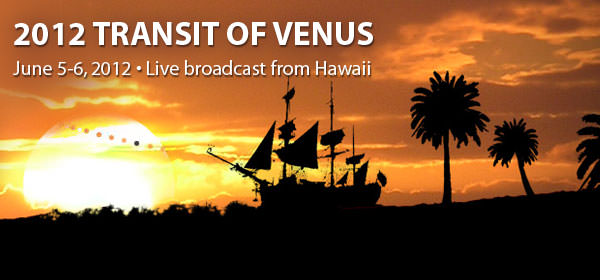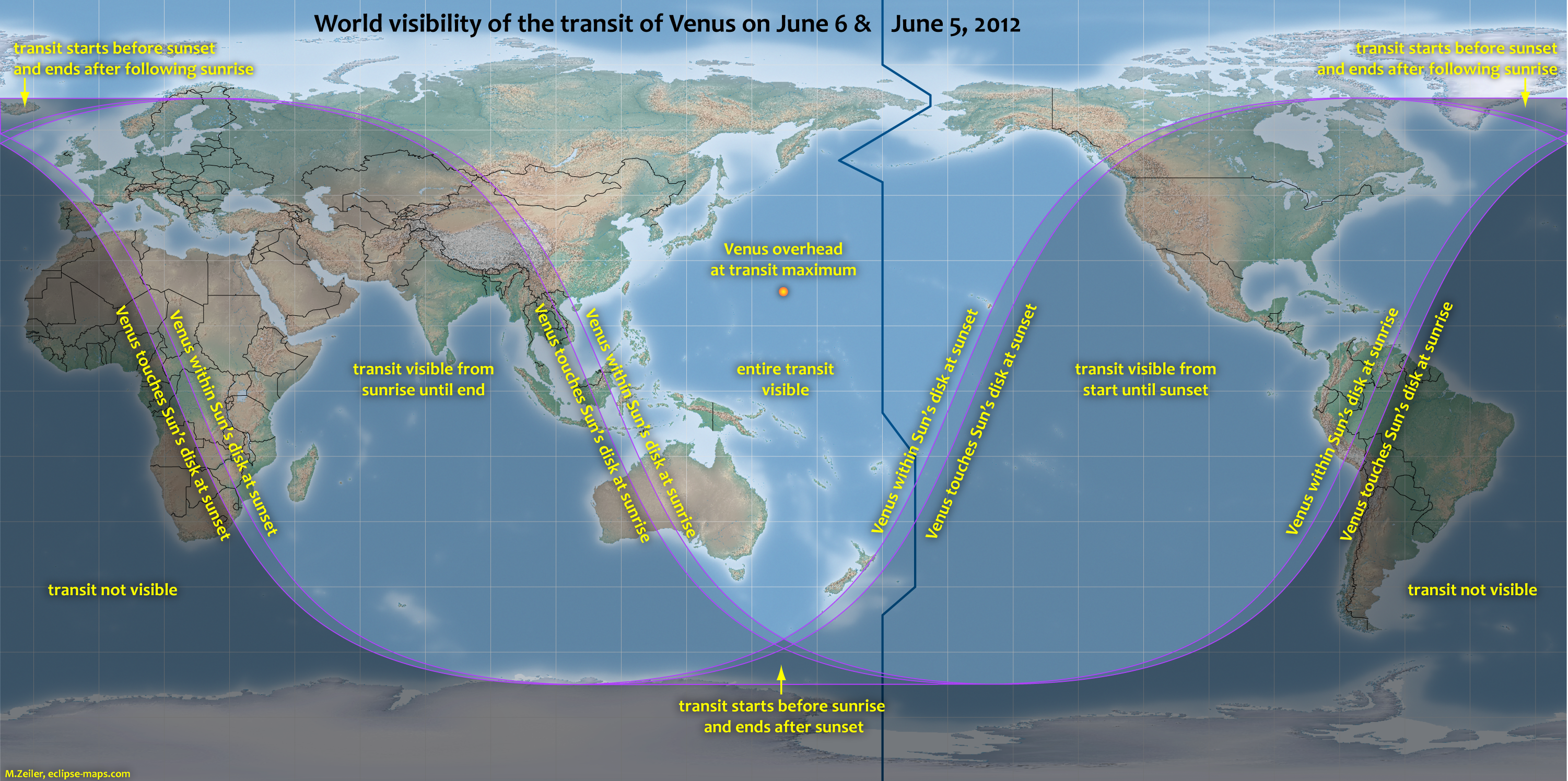The Transit of Venus
The last Transit of Venus happened on June 5 – 6, 2012. It won’t happen again in our lifetime! It is the rarest predictable astronomical event, occurs 4 times every 234 years!
A look at the history behind the Venus Transits, up to 1874. CREDIT: NASA
A look at the Transits of 1874 and 1882 which astronomers used to determine the scale of the Solar System. CREDIT: NASA
Best of The Transit of Venus – SDO Gallery (HD)
Click on an image below to view larger.
Video & image credit: NASA/Goddard Space Flight Center/SDO
We have seen Venus move between the Earth and Sun before like when it could be seen in the SOHO/LASCO coronagraphs. But what we didn’t see was it move across the face or disk of the sun. When that happens it is called the Transit of Venus. On June 5, 2012 the planet Venus will make its final trek across the face of the sun as seen from Earth until the year 2117. The last time this event occurred was on June 8, 2004 when it was watched by millions of people across the world. It is the rarest predictable astronomical event! It only happens 4 times every 234 years!
The Sun Today broadcasted LIVE from Hawaii
A special 6.5 hour live broadcast was planned, with teams at the Mauna Kea Observatory, Alaska, NASA Goddard Space Flight Center, NASA Ames and more. Alex Young will be on-air with other experts from NASA, while Virtuallinda will be interacting with your questions and comments via social media. The trip was also our honeymoon!
Quick facts on the Transit of Venus
- The next Transit of Venus happens on June 5 – 6, 2012.
- The last transit was June 8, 2004.
- After the upcoming transit the next one will have in 2117. That is 105 1/2 years!
- The one before 2004 was in 1882. 121 1/2 years before 2004.
- Transits and eclipses are rare celestial events but the transit of Venus is the rarest.
- Only 6 past transits have been observed starting with the 1639 transit.
- Transits of Venus allow astronomers to calculate more accurately the distance of Venus from the Sun, and subsequently the distances of other planets.
- The Solar Dynamic Observatory will capture the Sun during the 2012 transit in unprecedented detail.
When can I view it?
The transit starts when the edge of Venus first meets the edge of the visible Sun. This occurs on June 5, 2012 at 22:09 (10:09 P.M.) Universal or Greenwich Mean Time. This is called the exterior ingress. When Venus is completely inside the solar disk at 22:27 UTC it is at interior ingress. The mid point of the transit is June 6, 2012 at 1:29 UTC. Venus makes its 3rd contact with the edge of the solar disk at 4:31 UTC. This is called the interior egress. Then its final contact with the edge of the solar disk and the end of the transit occurs at 4:49 UTC. This is called the exterior egress. The figure below shows these 5 points during the almost 6 1/2 hour transit.

credit:http://transitofvenus.nl/wp/
| First Contact | Exterior Ingress | 22:09 UTC |
| Second Contact | Interior Ingress | 22:27 UTC |
| Mid-transit | 01:29 UTC | |
| Third Contact | Interior Egress | 04:31 UTC |
| Fourth Contact | Exterior Egress | 04:49 UTC |
These transit times are in Universal or Greenwich Mean Time. The day and times will be different in other timezones around the world. For example, Eastern Daylight Time (EDT) is 4 hours behind GMT meaning the transit starts at 6:09 P.M. (18:09) EDT while for Japan the transit starts at 7:09 A.M. on June 6, 2012. To convert UTC/GMT to your local time, click here.
Where can I view it?
Unfortunately, the transit is not viewable in its entirety at every location on Earth. Some locations will not see it at all. The map below shows the extent of the transit’s visibility from different locations on Earth. For example, the transit will be wholly visible from parts of the Pacific including Hawaii and Alaska. In the far north the entire transit can also be seen, since the sun does not set. Eastern Canada, the United States, Central America, the Caribbean and northwest South America will only see the first part of the transit. Western Asia, Europe, the Middle East and eastern Africa will only see the last part of the transit.
WATCH THE BROADCAST REPLAY!
How can I watch it safely?
Chuck Beuer of www.transitofvenus.org discusses the 6 ways to safely view the transit. Additional notes are at here.
- The last way listed by Chuck but the easiest way is to view the transit live online from Mauna Kea Observatory, Hawaii. Watch NASA’s Sun-Earth Day Web Cast which includes Dr. Alex Young from The Sun Today! The webcast will have live and taped interviews along with a rich collection of additional content but if are able it is well worth looking at safely** with your own eyes using one of the last 5 methods listed.
- Watch it directly using approved eclipse shades or #14 shade welding glasses
- Pinhole projectors are a safe.
- You may project a magnified view of the sun through a reflector telescope or binoculars onto a white surface, which conveniently allows a larger number of people to watch concurrently.
- A method for allowing a large crowd to witness the transit of Venus concurrently is to project a magnified image through a closed-loop device.
- The transit of Venus is perhaps best when viewed directly when magnified, which demands an appropriate solar filter over the large end of the telescope.
- In addition to watching the live webcast and viewing the transit in person, the entire transit can, for the first time, be viewed from space with never before seen clarity by NASA’s Solar Dynamics Observatory (SDO). This will be in near-real-time.

The entire Transit of Venus 2004 is captured in a composite photograph composed of 11 separate images taken at 30 minute intervals. Photographs by Fred Espenak (MrEclipse.com)
What does the transit look like near you?
Those of us without special telescope mounts will see the Venus Transit as a curved trajectory across the solar disk when we view it with respect to the horizon. This is because in its daily course through the sky, the solar disk rotates with respect to the horizon. You can find the simulation and a transit calculator here. The simulation is courtesy of www.sunaeon.com.



